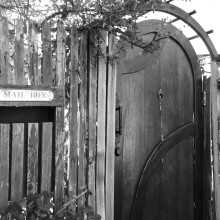I’ve always thought of PR as inherently social. When I started in the business as an entertainment publicist, I spent my days on the phone with one media person or the other, trying to encourage them to come to a screening or show and write about my client.
It was about stories + relationships.
And like it or not, those were – and in many cases still are – relationships with media outlets (though we didn’t refer to them as mainstream back then). Even now, when some clients say, ‘Let’s do some PR around that,’ they often refer to an activity that leads to coverage or news.
The model still works. But it’s being held together by duct tape that’s fraying at the edges. And after last winter’s fresh storm of media layoffs and consolidation, the tape continues to lose its stickiness.
Am I sounding yet another death knell for PR? Far from it. Statistics show the industry is on the upswing with global growth pegged at 11%. PR continues to move into content marketing and paid social media and some pros are adapting well to the new digital and multimedia storytelling landscape. Others, as you’d expect are kicking, screaming and still clinging to the good old days.
So how does the profession deal with repositioning itself in a world where its name is still synonymous with publicity?
Enter social PR
Social PR has many similarities to the more traditional practice. But there are some key differences, too:
No more lurking in the shadows – PR pros need to step out and be transparent about who we are and who we represent.
Use real language, please – Enough with the corporate speak. No one likes it. And why did we ever think obfuscation would appeal to media?
Someone moved my intermediary – There’s no longer just one route – via media – to reach our audience. And a story that catches on in social is often picked up by media and amplified. Plus, with the replay web, news is news when we find it and not just when it’s released, so stories can have more than one life after launch.
Spam not – Beyond CASL, how do you find, credential and build relationships with people who can help spread your story? And noticing that I may have mentioned Norman Rockwell in passing on my blog five years ago and then pitching me on a Rockwell story doesn’t cut it.
Paint me a picture – In a visual world, we need to master how to seamlessly tell stories in pictures, video and words.
It’s the outcome, stupid – The industry relied on measuring outputs like a binder full of coverage for too long. It’s time our results were tied to business goals and we were held accountable for the value we create.
And there’s another difference: the c word, as in content. And treating content as an asset to be traded or syndicated in a strategic and creative way.
That means understanding where your story fits, how big it is and which influencers (including media) you can partner with in a way that provides value and achieves both parties’ objectives. It may not result in a binder of clips, but with a smart approach you can move the needle and build a foundation for the future.
Are you practicing social PR? What other elements would you add?
A version of this post was originally published in Marketing Magazine.


Digital_DRK Thanks Darryl. That’s a great point. As one of my friends said, we’re living in the middle of constant uncertainty – so being able to listen, watch and adapt is really important.
Re using Meerkat or Periscope for a #digitaledu class – or part of one – stay tuned. I like the idea and need to figure out a couple of logistics.
Thanks Martin. I would add, that new social PR channels are always emerging and existing ones are constantly changing, remain aware and stay open to adapting to those changes.That being said, I would be interested in seeing a scheduled live #digitaledu broadcast of a partial class lecture over Periscope or Meerkat sometime.